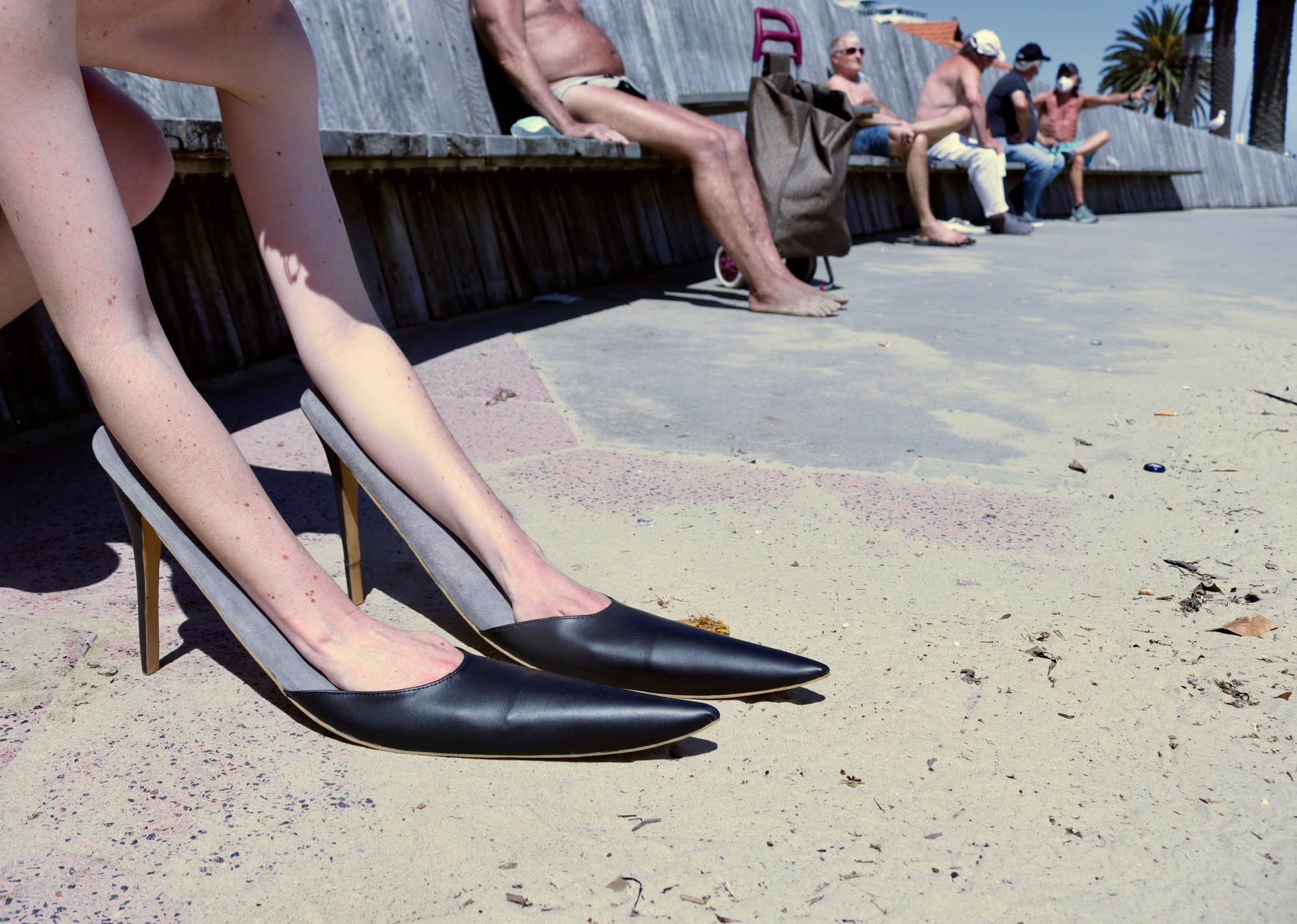Footwear is the most existential of sartorial categories. That’s to say, of all the garments we wear and accoutrements we don, the shoe is most intrinsically tied to the human experience. Much more than just the foundation of any sound wardrobe (what’s a good outfit without the perfect shoe to match?), shoes are foundational to our very lives. At their most elemental, shoes protect us, provide comfort. Practically, they prop us up.
No matter the style, each pair of shoes is a small feat of engineering. Our footwear takes us from Point A to Point B, it allows us to navigate — and explore — the world around us. Trainers make strides on morning jogs. Chelseas are for stomping through slush. Hiking boots for on and off-trail excursions. Footwear can be transformative, too. Both figuratively and literally; as stiletto maestro Christian Louboutin said, “Shoes transform your body language and attitude.”
So, how does one innovate such a foundational — and practical — fashion category? By turning it on its heels, turns out. With a focus on sustainability and surrealism, a new generation of footwear designers are fundamentally questioning our relationship with the shoes we wear — and consume. Here, i-D speaks with Diane Gaignoux, Alison Pyrke, Ugo Paulon and Western Affair’s Olivia Pudelko about the footwear of the future.
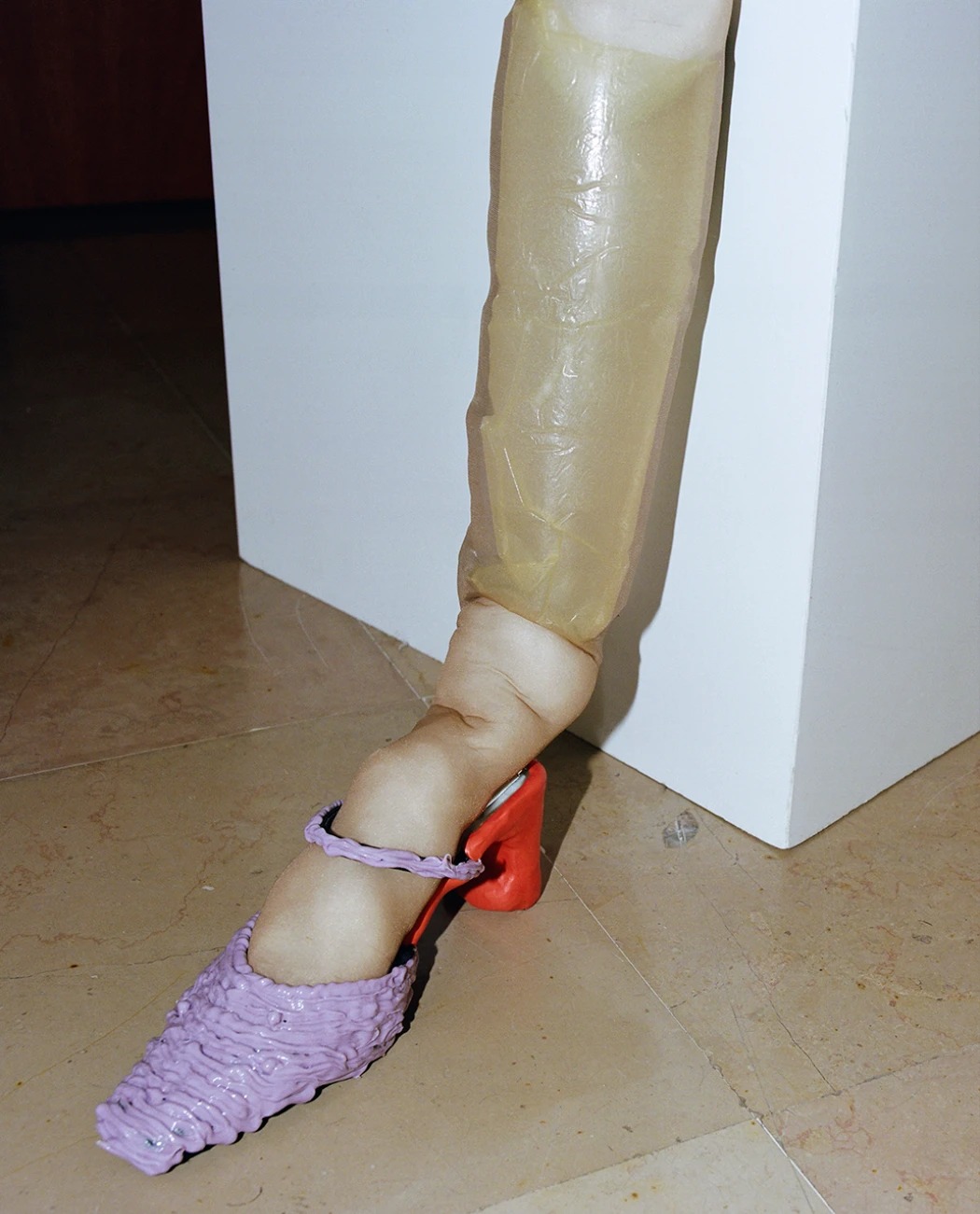
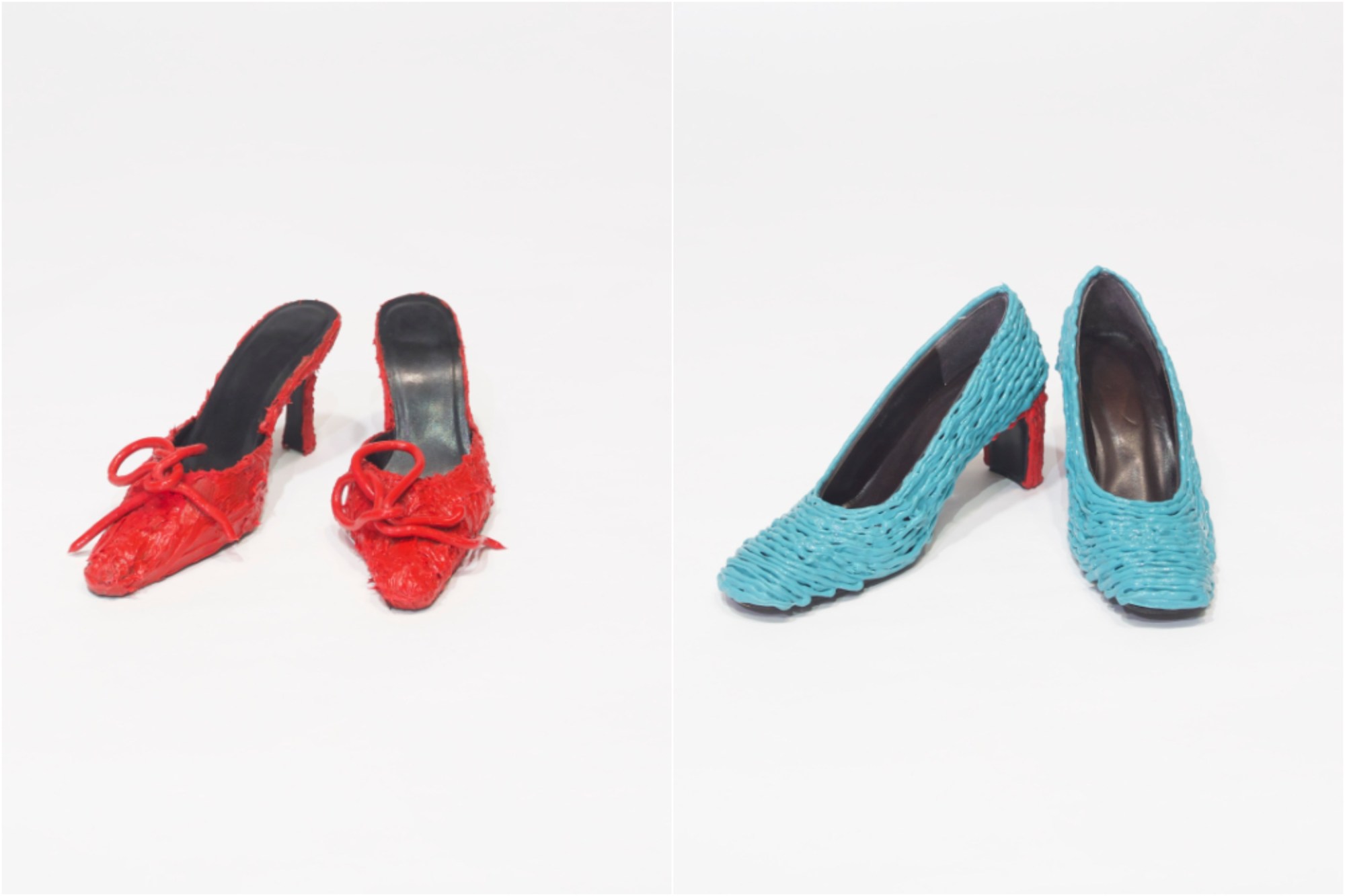
Diane Gaignoux
Central Saint Martins knitwear alum, Diane Gaignoux, creates silicone footwear sculptures from vintage shoes.
What’s the definition or purpose of a shoe? How does this factor into your work?
A shoe is, first and foremost, a practical object; it needs to be comfortable. But, then, I feel like it’s one of the main components that makes a “look.” For now, I’m focusing more on this aesthetic aspect, considering them much more as objects, exploring colours, shapes and textures. I’m wondering if there might be a correlation between shoe fetishism and how silicone makes my shoes look like delicacies and, therefore, objects of desire.
What effect do you hope to achieve through your silicone footwear?
What I first loved about the materiality and texture of silicone is the ambiguity created between taste and distaste. I think it questions our personal definition of beauty. I was also really attracted to the unfinished aspect that it creates, as if the footwear was forever in the process of being sculpted. I think it brings life to the inanimate, a presence.
Could you walk me through how you make your footwear?
For now, all my shoes are made out of an upcycling process. First, I search for existing pairs, looking at shape, mostly. Then, I modify them, adding volumes, mixing materials, creating colours and applying them on the shoe. I like to work in a spontaneous and instinctive way with these. I also like working within the constraint of an existing shape. Sometimes the weirdest shoes I find can metamorphose into something really interesting and unexpected.
Could your pieces exist as autonomous works, without being related to the body?
Yes, they can! I’ve worked on a few photographic series’ where I wanted the pieces to exist without any human form inside to make them live. Using them as props for imaginary puppets, for example. I like to explore a lot of ways and contexts to use and reuse my pieces in order to make them play diverse characters and roles.
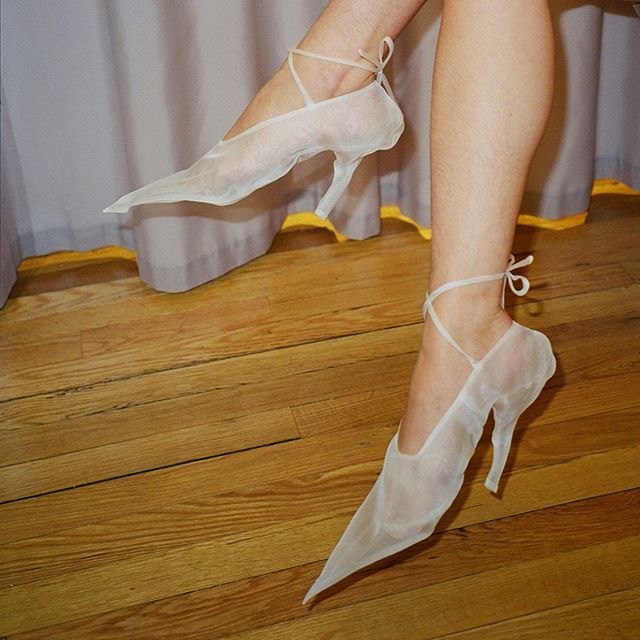
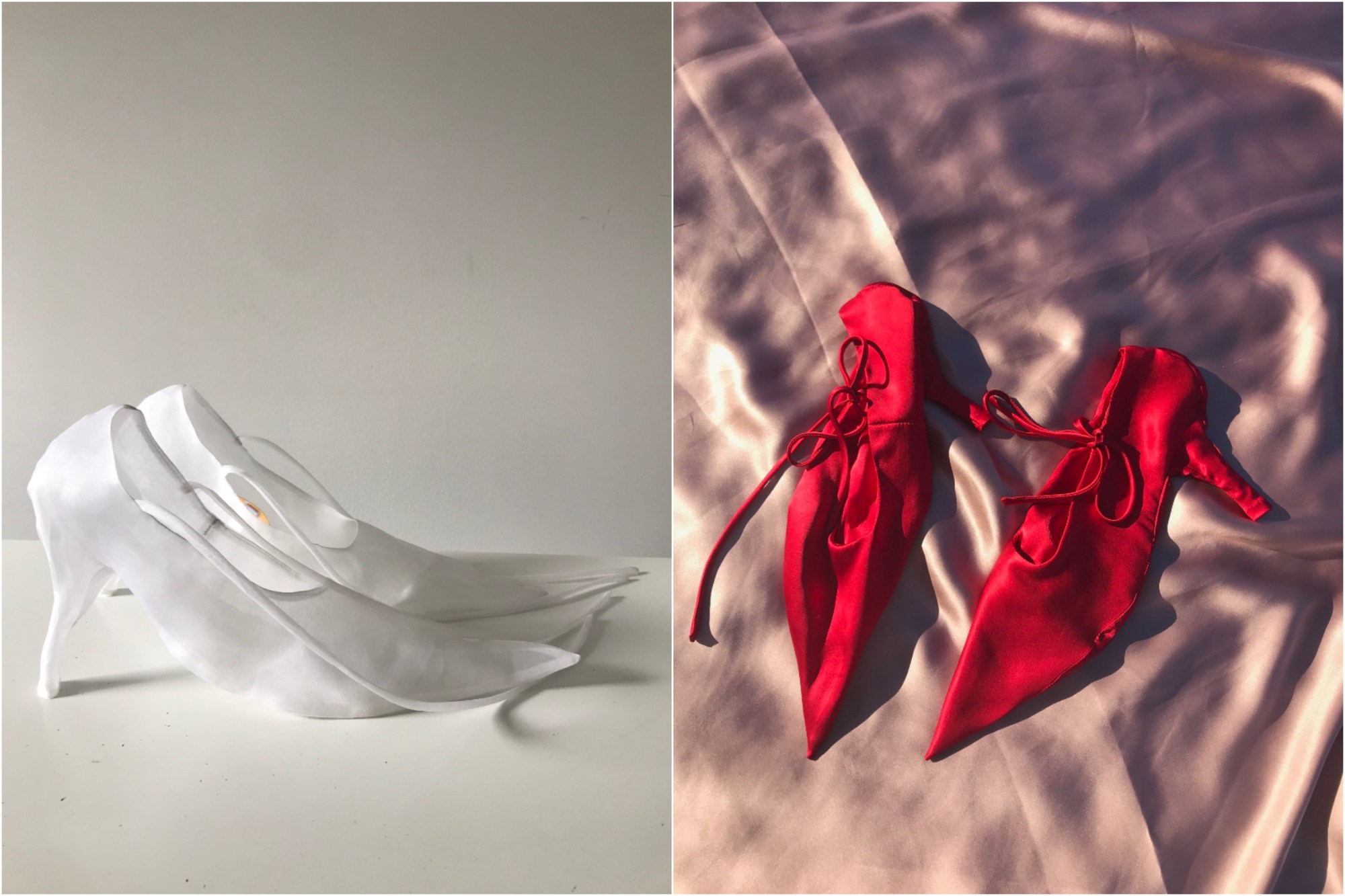
Alison Pyrke
Creating silk-heeled stilettos and shoes for arms, Melbourne-based designer Alison Pyrke explores the intersectionalities of footwear’s form and function.
How did you start making footwear?
I come from a fashion-slash-garment making background. As a younger designer, I was very enamoured with soft sculpture (and still am), which led me to consider how I apply this form of construction to footwear.
What’s the definition or purpose of a shoe? How does this factor into your work?
To me, shoes are a mediation between the body and surface; shoes enable the body to do all sorts of activities that would be impossible without this added appendage. This definition is often the basis of my explorations: I seek to explore the functionality of the body by means of footwear constructions and, in turn, the construction of footwear based on the form of the foot.
What’s the concept behind your soft stilettos?
Making stilettos entirely out of silk subverts the original intention of a stiletto: the hard, solid form of a classic pump lifts and holds the body in a very specific way. The soft stilettos are a means to enjoy the form of a stiletto while altering the context and manner of wearing them. The Soft Stilettos also allow the wearer to take control with their interaction with this footwear. They might walk on tippy toes to activate the heels, or luxuriate in bed. It’s a choose-your-own-adventure garb.
Is there a limit to what a shoe can be?
Not necessarily. Up until now, I’ve mostly designed with classic footwear signifiers to maintain the recognizable characteristics of shoes, while expanding what they can be. That said, I often dream of making fully abstracted footwear.

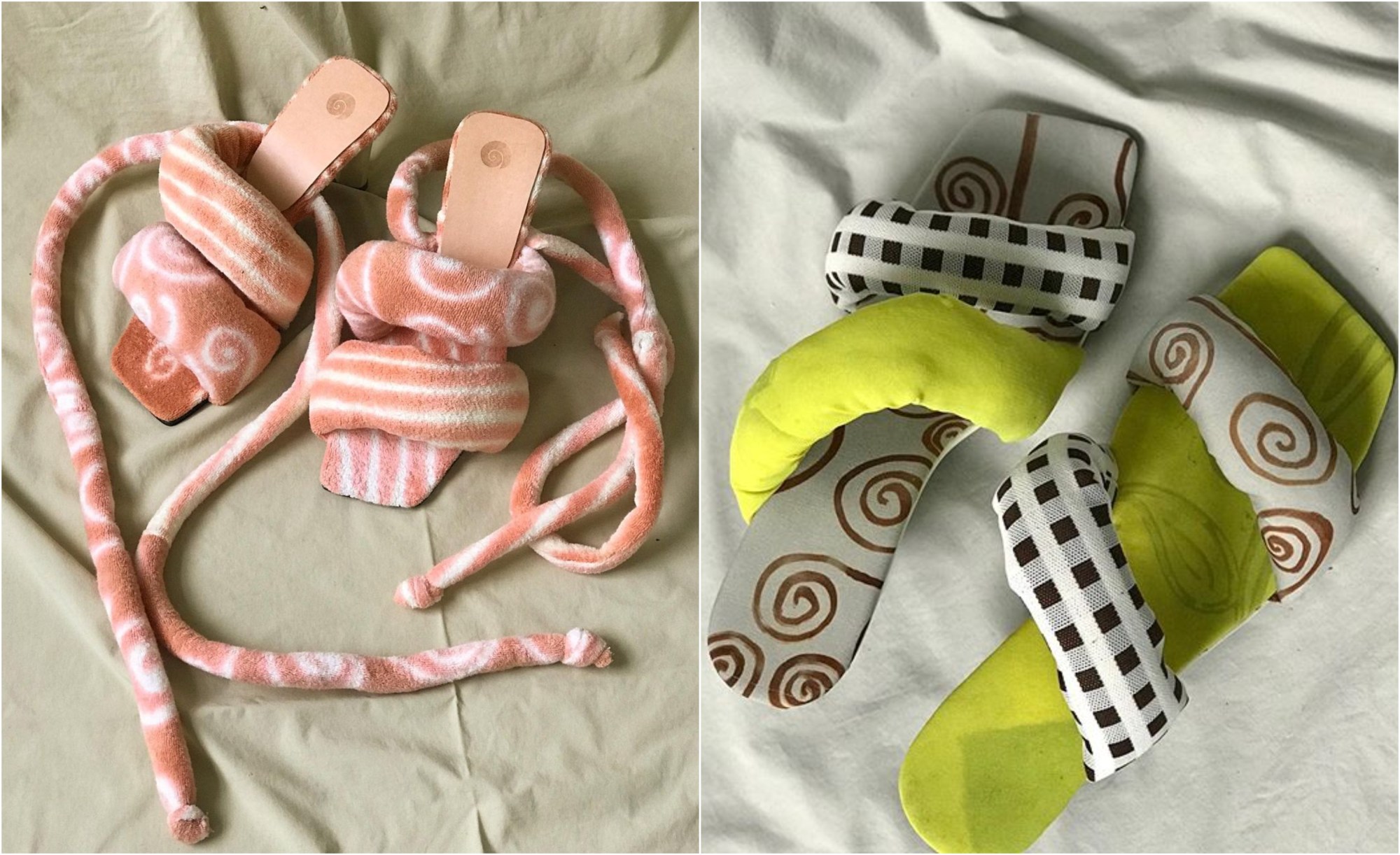
Ugo Paulon
Driven by sustainability and circularity, Ugo Paulon creates plush sandals from upcycled materials.
Why did you start designing shoes?
I’ve been working in womenswear for a long time but increasingly found myself struggling with the meaninglessness of the current fashion cycle, its pace and, not least, its wastefulness. After years of working with sustainable practices, I’ve become more aware of ways to decrease my own impact on resources. But, in the end, it really comes down to using up what we’ve already got instead of making new stuff. So Ugo Paulon started out as a challenge to myself to create as valuable and distinctive an outcome as possible with the least use of any new or virgin materials.
How do you approach sustainability through your designs?
Striving for sustainability and circularity is at the very core of what I do; it’s the starting point of the label. We all have a very long journey ahead of us in terms of unlearning old practices in all areas. By no means will these shoes have any positive impact on any damage already done. Until we do have solutions to the problems, the least I can do is make sure I don’t add to the damage.
Could you walk me through the lifecycle of an Ugo Paulon shoe?
All my shoes are made from carefully-sourced vintage shoes, clothes, leftover fabrics and other second-hand materials. First, I take the whole shoe apart, reinforcing and restoring them where needed. And I also use upcycled wadding and foam. I often have the shoes resoled, which adds to their lifespan and keeps them in use for even longer. In the future, I plan to take the full responsibility for the shoes’ whereabouts once their time is up again. I’m not truly circular until I find a way to take back what I’ve created.
Could you describe the unique look of your footwear?
The name Ugo Paulon, itself, is a merger of different eBay sellers’ usernames from whom I bought the vintage shoes. Due to the nature of upcycling, a degree of imperfection must be expected and appreciated. I also hand-dye and hand-print all the fabrics I’ve sourced. And this tends to result in quite random combinations due to different fabrics reacting differently to the dyes. So the results are, to some extent, down to experimentations in the process. Luckily, I’m not a slave to symmetry or perfection, since there’s no chance all shoes will come out even — not even left and right in a pair. I embrace the mismatching in each pair.

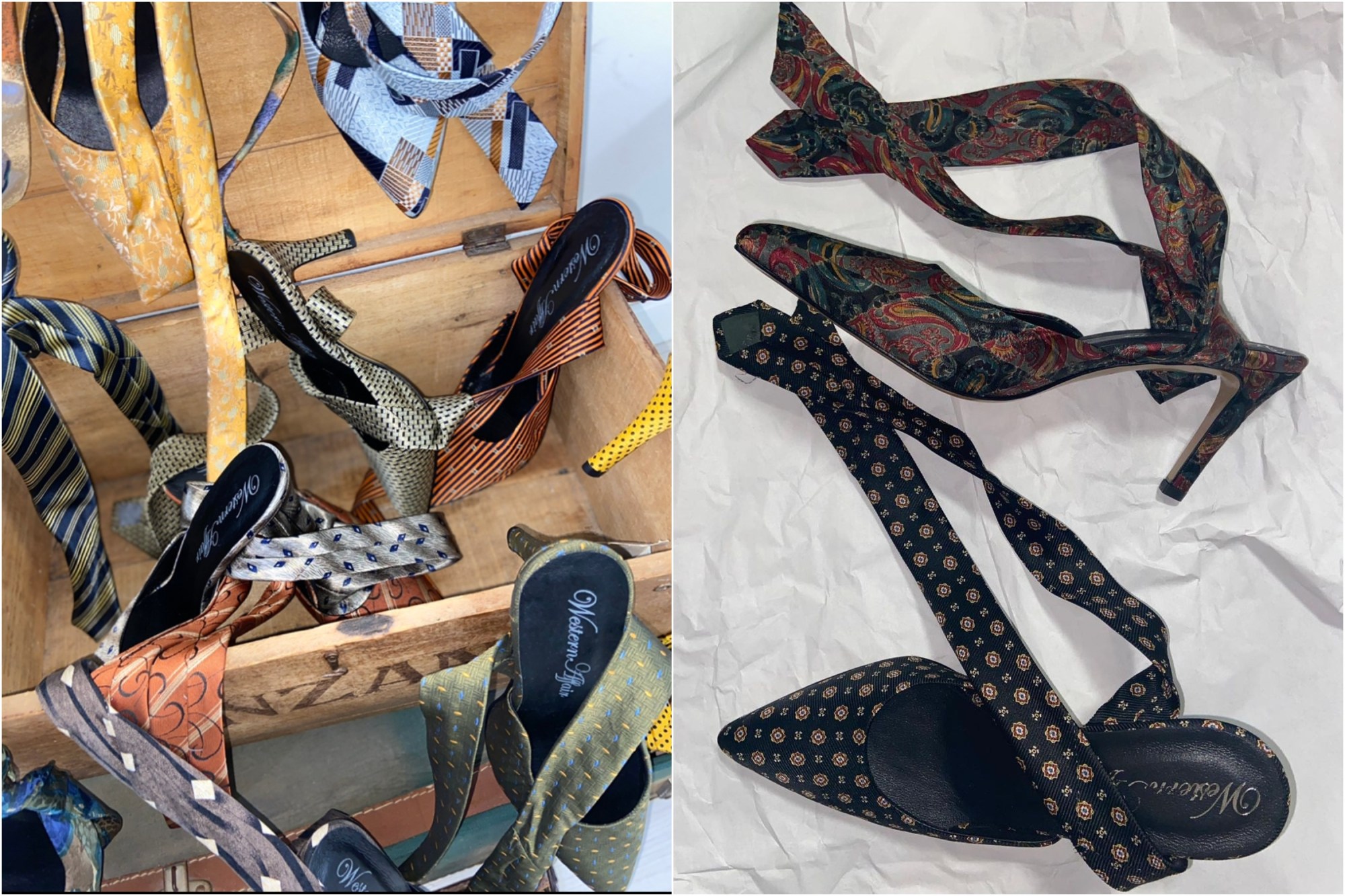
Western Affair’s Olivia Pudelko
Drawing from her studies in fine art, Western Affair’s Olivia Pudelko crafts footwear from everyday objects: carpets, mops and ties, to name a few.
How did you start designing shoes?
At university I studied art and was making shoes as sculptures.
Why did you start creating footwear from everyday items?
When you study art you’re encouraged to use everyday objects or discarded items and see them as something else. I think in fashion that practice isn’t so common, especially on a bigger scale. I’m now focused on seeing how far I can take this, production-wise. It takes a lot of convincing for a practically unknown brand to have a manufacturer agree to make shoes out of something like old rugs, but I’m making it happen.
What’s the definition or purpose of a shoe? How does this factor into your work?
This answer varies a lot with every design that I make. I started out making shoes that were strictly for editorial use, made with wax, burnt fabric, massive wood platforms and entirely out of latex. They had to be placed on the models with no walking allowed! Gradually, I’ve started to make wearable shoes because that’s the demand. I hope to adapt every design I’ve made into a usable one. For example, I’ve just launched a wearable version of the tie heels this year, three years after I made the first samples.
How do you approach sustainability through your designs?
Sustainability is the first thing I think about when I’m coming up with new ideas. I think, in shoe design, it’s maybe more difficult to be sustainable than with clothing. For example, when a heel’s made of recycled plastic, it won’t be as strong. Or when I work with deadstock, I know the rubber won’t last more than a few years. I think an innovation would be much-needed in some areas of shoe design. As my brand grows, I’ll invest in this field and hopefully make some positive changes.
